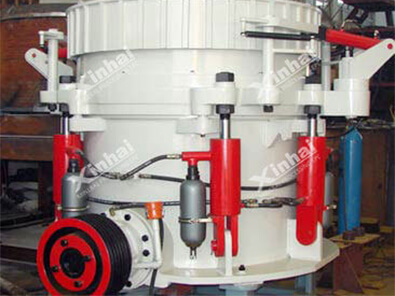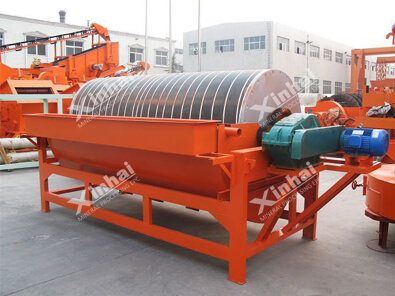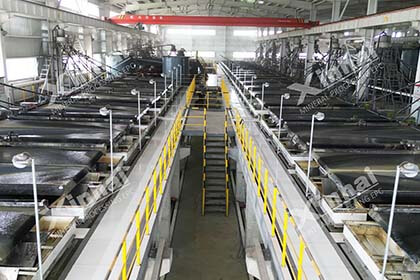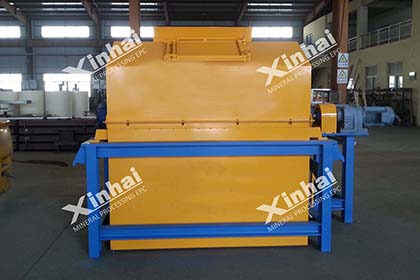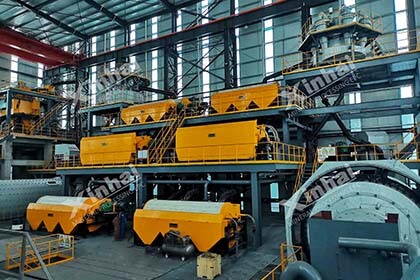The Beginner's Guide to Mica Processing
 Chileen Gao
Chileen Gao
 Apr 17, 2023
Apr 17, 2023
 2733
2733
If you want to know more details about equipment, solutions, etc, please click the button below for free consultation, or leave your requirements!

( mica processing plant photo)
Mica is a common silicate mineral with the chemical formula KAl2(AlSi3O10)(OH)2 and has a layered structure that can be divided into thin sheets. Mica has a wide range of applications in both mineralogy and industry. This article will describe the properties of mica, its application areas, the separation process and the issues that need attention during the separation process.
01Physical and Chemical Properties of Mica
Back
Physical Properties
Mica is mostly brown, green, grey and red in colour, with a hardness of 2.5-4 and a specific gravity of 2.7-3.3. Mica is very flakeable and can be divided into very thin lamellae, transparent to translucent, with a glassy lustre. Mica has good heat resistance during heat treatment and can withstand high temperatures.
Chemical Properties
The chemical composition of mica is complex and its main components are aluminium oxide, silica and potassium oxide. Mica is a layered mineral with interlayer ions that can be replaced by substances such as hydrated ions and ion exchange resins. Mica is insoluble in both acidic and alkaline solutions, but can be dissolved in hydrofluoric acid and concentrated sulphuric acid.
02Application Areas of Mica
Back
Mica has a wide range of applications in industry. Because of its excellent heat resistance, insulation and chemical stability, it is widely used in electronics, electrical appliances, building materials, ceramics, coatings, plastics, rubber and paper making. The flake nature of mica also makes it an important filler material that can be used to enhance the strength and hardness of materials.

( pyroxene magnesite mica mineral picture )
03Mica Separation Process
BackMica is a common silicate mineral that is usually found mixed with other impurity minerals and requires separation to obtain pure mica. There are several mica separation processes commonly used in modern mining production, and several of the main ones are described below.
The Gravity Separation Process
Gravity separation is a method that uses the difference in density between mica and other minerals to achieve separation by gravity. The method usually employs techniques such as heavy media sorting and centrifugal separation. The advantage of the gravity separation method is that it is effective in separating minerals with large density differences, but its disadvantage is that it requires a lot of energy and water resources.
Magnetic Separation Process
The magnetic separation method is a method of separating mica from other minerals by magnetic differences using magnetic separation techniques. The method usually uses equipment such as high intensity magnetic separators, which have the advantages of high sorting efficiency and large processing capacity. However, its disadvantage is that it requires the use of large amounts of electrical energy and magnetic materials, which is costly.
Electrowinning Process
Electrowinning is a method of separating mica and other minerals by the action of an electric field, taking advantage of their differences in electrical conductivity. The method usually uses equipment such as electric separators, which have the advantages of large processing capacity and good separation effect. However, its disadvantage is that it requires pre-treatment of the minerals, such as grinding and trommel screens, which is costly.
Flotation Process
Flotation is one of the most commonly used processes in mica separation. The method mainly uses the difference in buoyancy between mica and other minerals to separate mica from other impurity minerals by adding chemicals to the pulp. The flotation method is usually divided into two stages: roughing and selection. In the roughing stage, the separation is achieved by adding a trapping agent and a froth agent to float the mica and other minerals on separate froths. In the separation stage, the mica needs to be further enhanced and is usually carried out using techniques such as magnetic separation and gravity separation.
The processing of mica for separation is complex and usually requires a number of process steps such as grinding, flotation, desliming and iron removal. During the grinding process, the raw minerals need to be crushed into smaller particles for the subsequent flotation process. In the flotation process, the mica and other impurity minerals are separated by adding chemicals to the pulp. In the desliming and de-ironing process, chemical or physical methods are required to remove the impurity minerals in order to obtain pure mica.

( wet ball mill for mica )
04What Needs to Be Noted in the Mica Separation Process?
Back
Mica separation is a complex process that requires attention to many issues to ensure separation results and production safety. Listed below are a few of the issues that need attention during mica dressing:
Ore properties.
Different mica ores have different physical and chemical properties and need to be fully tested and analysed according to the actual situation. In the separation process, different separation processes should be used depending on the nature of the ore.
Use of pharmaceuticals.
In mica separation, the selection and use of chemicals has an important impact on the separation effect. The chemicals should be selected reasonably according to the nature of the ore and the needs of the separation process, and used in strict accordance with the instructions for use, in order to avoid problems such as over- or under-dosing of chemicals.
Equipment maintenance.
The maintenance of mineral processing equipment has an important impact on the effect of mineral processing and production safety. In the separation process, the equipment should be regularly inspected and maintained to ensure the normal operation and service life of the equipment.
Safe production.
Mica processing is a hazardous job that requires strict adherence to safe production procedures and operating regulations. During the separation process, care should be taken to maintain cleanliness, ventilation and safety to avoid accidents and environmental pollution.
Energy conservation.
The mica separation process consumes a large amount of energy, and energy-saving technologies should be used to reduce energy consumption as much as possible. For example, by improving the structure of equipment and improving the process flow, energy consumption can be reduced and production efficiency increased.
There are many issues that need attention in the mica separation process and each link needs to be carefully mastered and grasped. Only by strictly observing the operating procedures in actual operation and using various resources scientifically and reasonably can we obtain better separation results and economic benefits.
05To Sum Up
Back
In general, the separation process of mica requires consideration of various factors such as the nature of the ore, the separation effect and the cost. Different separation processes have their own advantages and disadvantages and need to be selected according to the specific situation in the actual application. With the continuous progress of science and technology, mica separation technology will be constantly updated and improved, making a greater contribution to the development of mica and its applications.
 +86 18716000713
+86 18716000713 xlyin@xinhaimining.net
xlyin@xinhaimining.net




 Message
Message Chat Now
Chat Now


